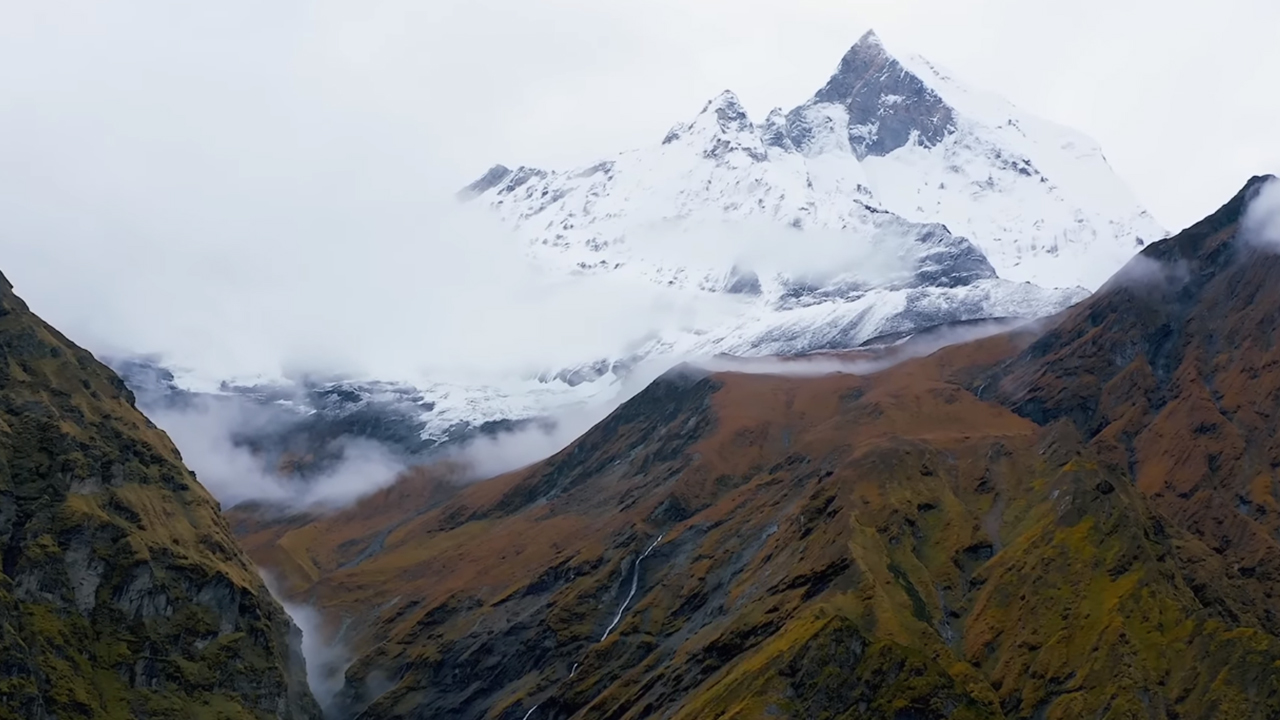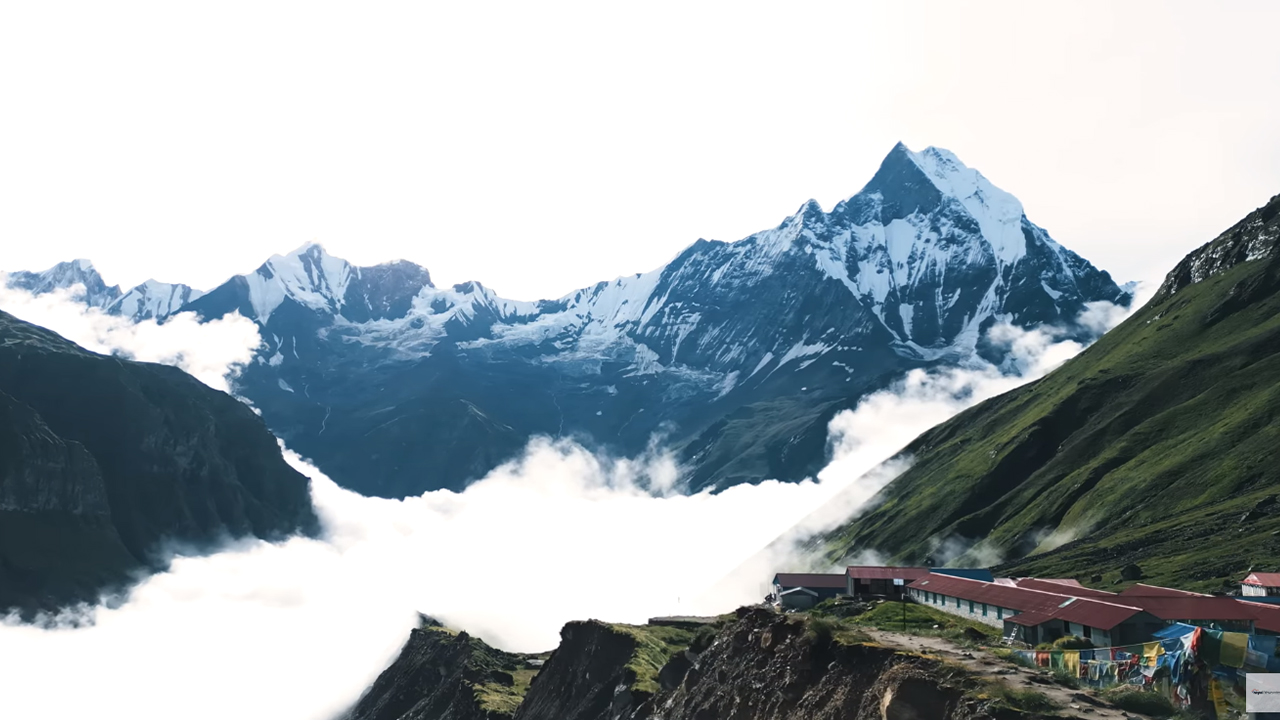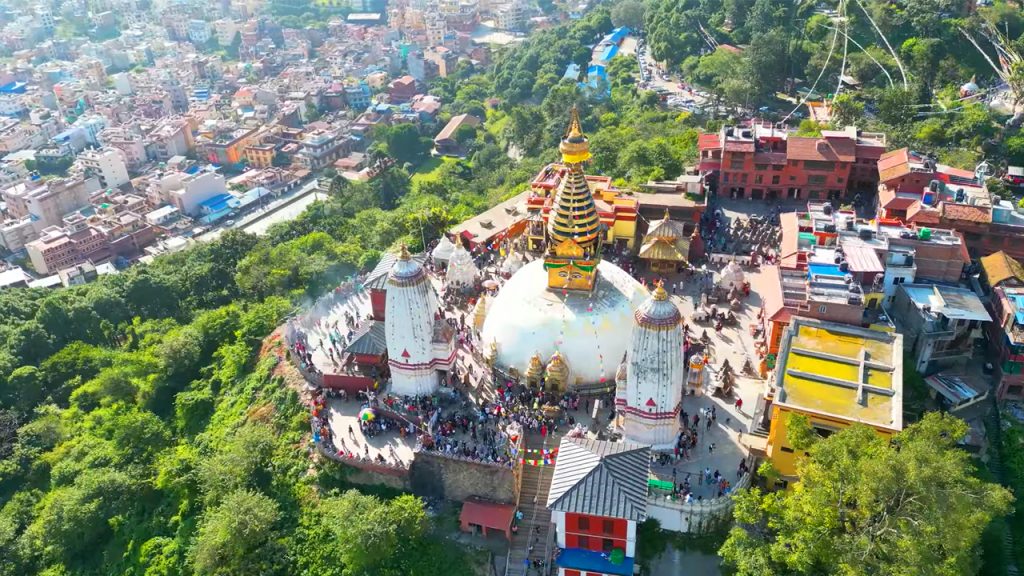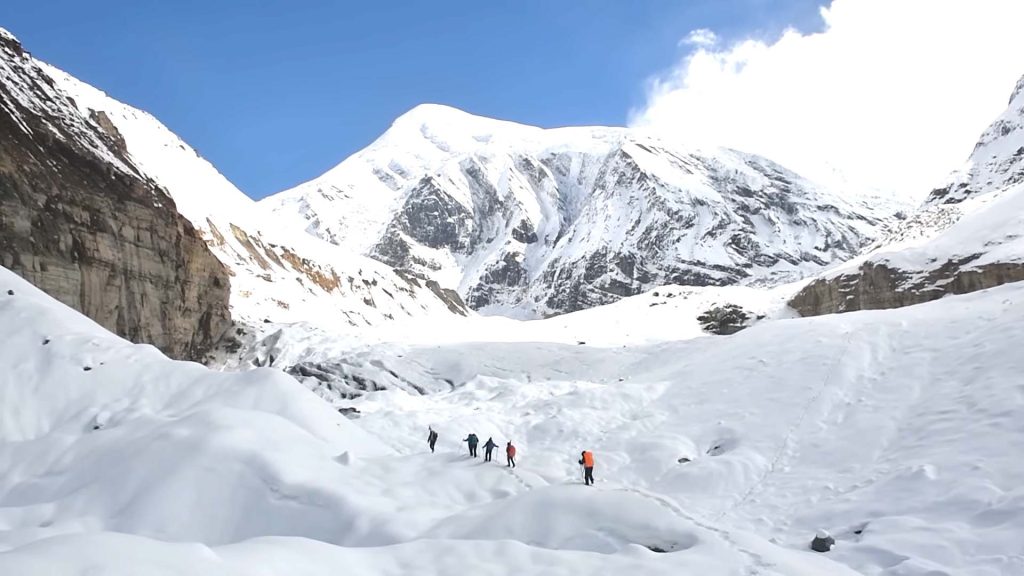Annapurna Circuit Trek
The Annapurna Circuit trek is a true classic! Trekkers from near and far have hailed it as one of the best itineraries in the world with its visit to Thorong La Pass, amazing mountain vistas, and pristine areas of natural beauty.

There are certainly challenges along the way to reach our maximum elevation of 5416 meters; the Thorong La Pass is a tough feat but believe us when we say, it is worth the effort! When you witness the panoramic views of the mighty Himalayas and experience the warm welcome from the local people, you will surely agree with us that this trek is not to be missed.
The route takes us to the districts of Manang and Mustang, the only Nepali districts “across” the mountains and surrounded by the Annapurna Range. We follow the River Marsyangdi from the beginning, all the way to Thorong La Phedi, crossing its crystal, icy waters many times on impressive suspension bridges.
You can try the tasty, crisp apples in Marpha, experience the mischievous winds in the Jomsom Valley, and cast your eyes on the world’s deepest gorge that lies between the giants of Annapurna I and Dhaulagiri. Along the way, we visit the oldest monastery in Nepal and traditional Gurung and Thakali villages steeped in culture and Buddhist and Hindu religious rituals.
Have you ever fancied bathing in a natural hot spring to relax your muscles after a long day trekking? Well, you’re in luck when we reach Tatopani, jump in and replenish your body. Fuel your energy with what Nepali has hailed “the best Daal Bhat “ in the country at Ghorepani and sample the local apple pie, cider, and brandy in Marpha. This is a trek into a Tibetan-influenced wonderland, come along and enjoy the ride!

Annapurna Circuit Trek Itinerary
Day 1: Welcome to Nepal!
The journey begins as you touch down in the vibrant city of Kathmandu. Greeted by the majestic Himalayas, your airport pick-up leads to a relaxing stay at a 3-star hotel in the heart of Thamel. Here, the bustling streets are filled with the promise of adventure.
Day 2: Kathmandu Exploration and Trek Preparation
A day filled with cultural immersion awaits. Meet your trekking guide and embark on a last-minute shopping spree for essentials. The historic sites of Pashupatinath, Boudhanath Stupa, Swaymbhunath, and Patan Durbar Square provide a glimpse into the rich tapestry of the Kathmandu Valley.
Day 3: Drive to Bhulbhule
The journey officially begins as you leave Kathmandu behind and head towards Bhulbhule. The 7-hour drive takes you through picturesque landscapes, setting the stage for the adventure ahead. Accommodations at a basic teahouse offer a taste of traditional Nepali hospitality.
Day 4-7: Ghermu Phant to Pisang
Traversing through enchanting landscapes, each day brings new wonders. From the waterfalls near Ghermu Phant to the suspension bridges leading to Dharapani, the trail unfolds with moderate challenges. The apple orchards of Chame and the unique monastery at Pisang make each step a cultural exploration.
Day 8-12: Manang to Thorong La Pass
As you ascend to higher altitudes, the views become more spectacular. The choice between the upper and lower trails to Manang provides flexibility. An acclimatization day offers the chance to explore Gangapurna Lake, while the trek to Thorong La Pass at 5416m is a triumphant moment. Congratulations on reaching this high alpine wonderland!
READ MORE: Everest Base Camp & Island Peak Trekking Itinerary
Day 13-15: Muktinath to Ghorepani
Descending to Muktinath, where spirituality meets stunning mountain vistas, you continue towards Kagbeni, passing through the arid landscapes. Jomsom welcomes you with its windy valley, and a scenic drive to Tatopani is an adventure in itself. The trek leads to Ghorepani, where rhododendron forests paint the landscape in vibrant hues.
Day 16-17: Poon Hill to Pokhara
A sunrise trek up Poon Hill unveils panoramic views of the Annapurna range. The journey continues to Nayapul, concluding with a drive to Pokhara. Here, a 3-star hotel provides a well-deserved rest, and the free morning allows exploration of this lakeside paradise before a flight back to Kathmandu.
Day 18: Departure
As you bid farewell to the enchanting landscapes of Nepal, you carry with you memories of a Himalayan odyssey. The Annapurna Circuit has not only tested your physical limits but has also immersed you in the rich culture and breathtaking scenery that make this trek a once-in-a-lifetime experience.
Embark on this adventure, where every step leads to discoveries, and every summit offers a glimpse into the soul-stirring beauty of the Annapurna region. Trekking the Annapurna Circuit is not just a physical journey; it’s a transformative experience that lingers in the heart long after the final goodbye to Nepal.
Frequently Asked Questions (FAQs)
Q1: How challenging is the Annapurna Circuit trek?
A1: The trek varies in difficulty, from easy to strenuous, depending on the terrain and altitude. Adequate physical preparation and acclimatization are crucial.
Q2: What is the best time to trek the Annapurna Circuit?
A2: The best seasons are spring (March to May) and autumn (September to November), offering clear skies and moderate temperatures. Winter treks are possible but require additional preparation.
Q3: What are the accommodation options during the trek?
A3: Accommodations are basic teahouses along the trail. These offer a rustic yet cozy experience, providing essential amenities for trekkers.
Q4: How is altitude sickness managed during the trek?
A4: The itinerary includes acclimatization days to minimize the risk of altitude sickness. Trekkers are advised to stay hydrated, ascend gradually, and recognize symptoms for timely intervention.
Q5: Is prior trekking experience necessary?
A5: While prior trekking experience is beneficial, beginners with good physical fitness can undertake the Annapurna Circuit. A reasonable level of fitness and mental preparedness is essential.
Q6: Are permits required for the trek?
A6: Yes, trekkers need an Annapurna Conservation Area Permit (ACAP) and a TIMS (Trekkers’ Information Management System) card. These can be obtained in Kathmandu before the trek.
Q7: What should be included in the packing list?
A7: Essentials include trekking boots, layered clothing, a sturdy backpack, water purification tablets, a first aid kit, and personal items. A detailed packing list is provided during the pre-trek briefing.
Q8: Can the trek be customized for a shorter duration?
A8: The provided itinerary is a comprehensive 18-day plan. However, it can be customized based on individual preferences, physical fitness, and time constraints. Consult with your trekking agency for personalized itineraries.
Embarking on the Annapurna Circuit is an adventure of a lifetime, and addressing these frequently asked questions will help prepare and empower trekkers for this remarkable journey.



